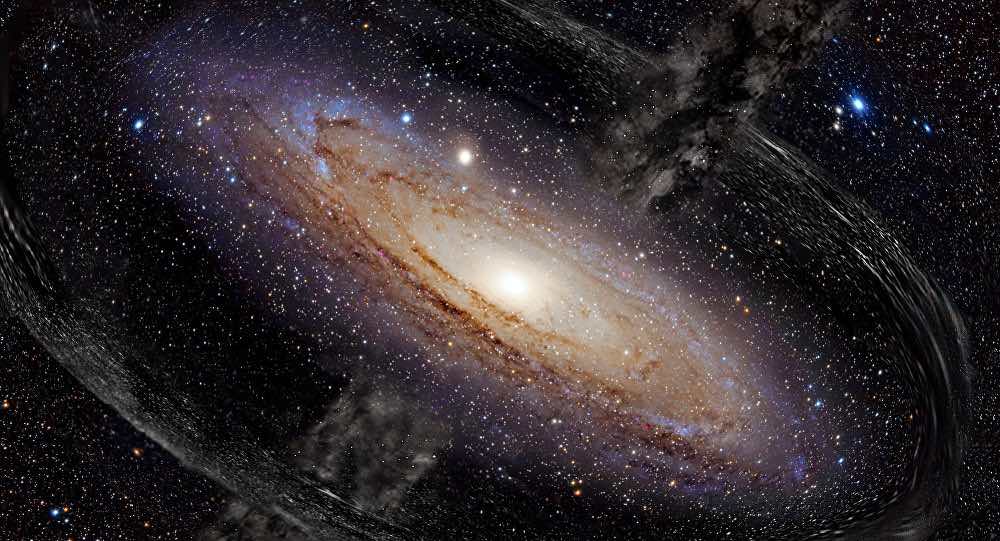
Physicists and astrophysicists have been spending decades trying to explain the existence of dark matter and dark energy, unknown substances we can’t see or touch, yet they make up most of the universe as we know it – 95 percent of it. A new study conducted by researchers at the University of Oxford could finally explain this strange behavior of dark matter, finding firm evidence for Einstein’s predictions made 100 years ago.
The currently recognized model of the Universe doesn’t reveal much about the behavior of dark matter and dark energy. We can’t use it to learn physical properties of the two. The only way we can recognize dark matter and dark energy as real is to observe their gravitational effects on the already existing matter.
A new study published in Astronomy and Astrophysics offers an explanation to the behavior of dark matter, with answers to questions such as: why does it keep growing as the universe is expanding, and how can we “touch” it?
“We now think that both dark matter and dark energy can be unified into a fluid which possesses a type of ‘negative gravity’, repelling all other material around them,” Dr. Jamie Farnes from the Oxford e-Research Centre, Department of Engineering Science said in a statement. “Although this matter is peculiar to us, it suggests that our cosmos is symmetrical in both positive and negative qualities.”
Scientists had first ruled out the existence of negative matter because they thought that whatever this material is, it would become thinner as the universe grows larger. However, the observations of the universe show it’s not really like that.
Dr. Farnes’ theory suggests that negative masses can be continuously created. It shows that as more negative masses emerge into existence, the negative “mass fluid does not dilute” as the universe expands.
His research also hints at the behavior of dark matter halos. There are many galaxies in the universe that spin so fast that they should be devouring themselves. Still there’s always a dark matter halo which holds them together.
The research published today shows the properties of anti-mass, which are presented in a computer simulation. The simulation predicts that more dark matter halos form, similar to those which were found in observations made by radio telescopes. The first idea of the dark universe was predicted by Albert Einstein 100 years ago, when he discovered the parameter known as “cosmological constant.” Now, scientists know that this parameter is in fact a synonym to dark energy.
“Previous approaches to combining dark energy and dark matter have attempted to modify Einstein’s theory of general relativity, which has turned out to be incredibly challenging. This new approach takes two old ideas that are known to be compatible with Einstein’s theory—negative masses and matter creation—and combines them together,” Dr. Farnes said. “The outcome seems rather beautiful: dark energy and dark matter can be unified into a single substance, with both effects being simply explainable as positive mass matter surfing on a sea of negative masses.”
To support their findings, Dr. Farnes and his team will use a powerful radio telescope called Square Kilometre Array (SKA) which is an international project, building the largest telescope in the world, a project which the University of Oxford is participating in.
“There are still many theoretical issues and computational simulations to work through, and LambdaCDM has a nearly 30 year head start, but I’m looking forward to seeing whether this new extended version of LambdaCDM can accurately match other observational evidence of our cosmology. If real, it would suggest that the missing 95% of the cosmos had an aesthetic solution: we had forgotten to include a simple minus sign.”













